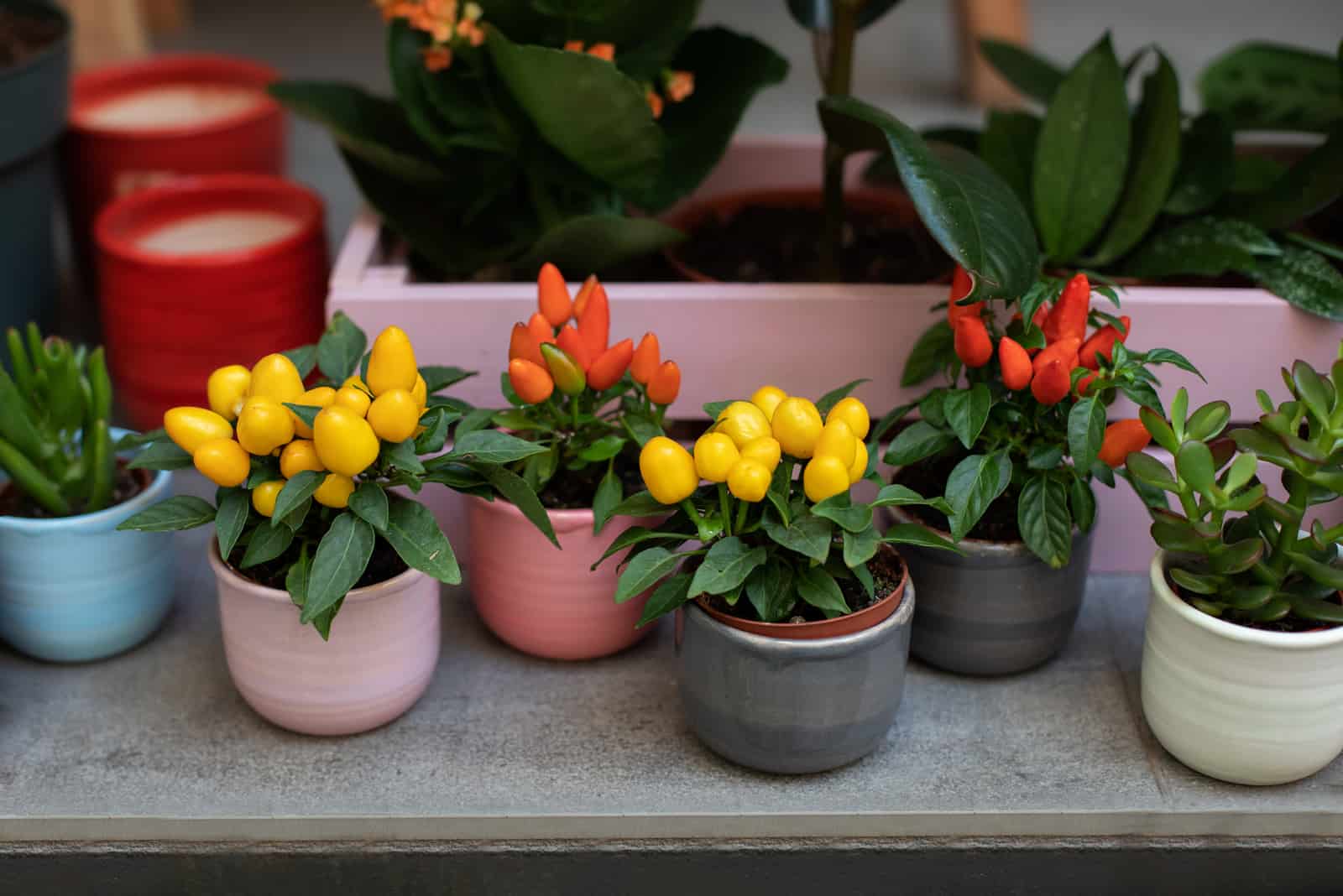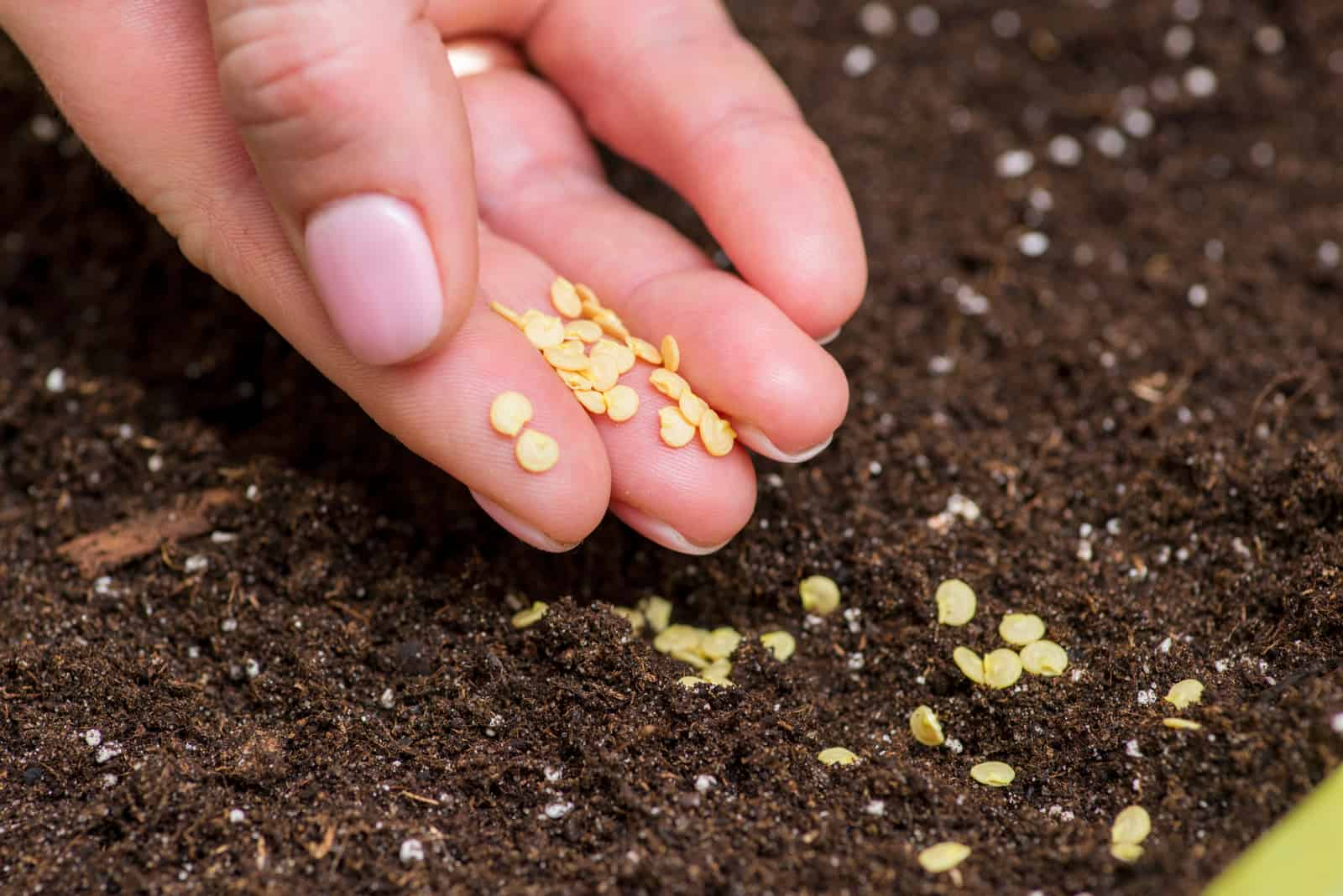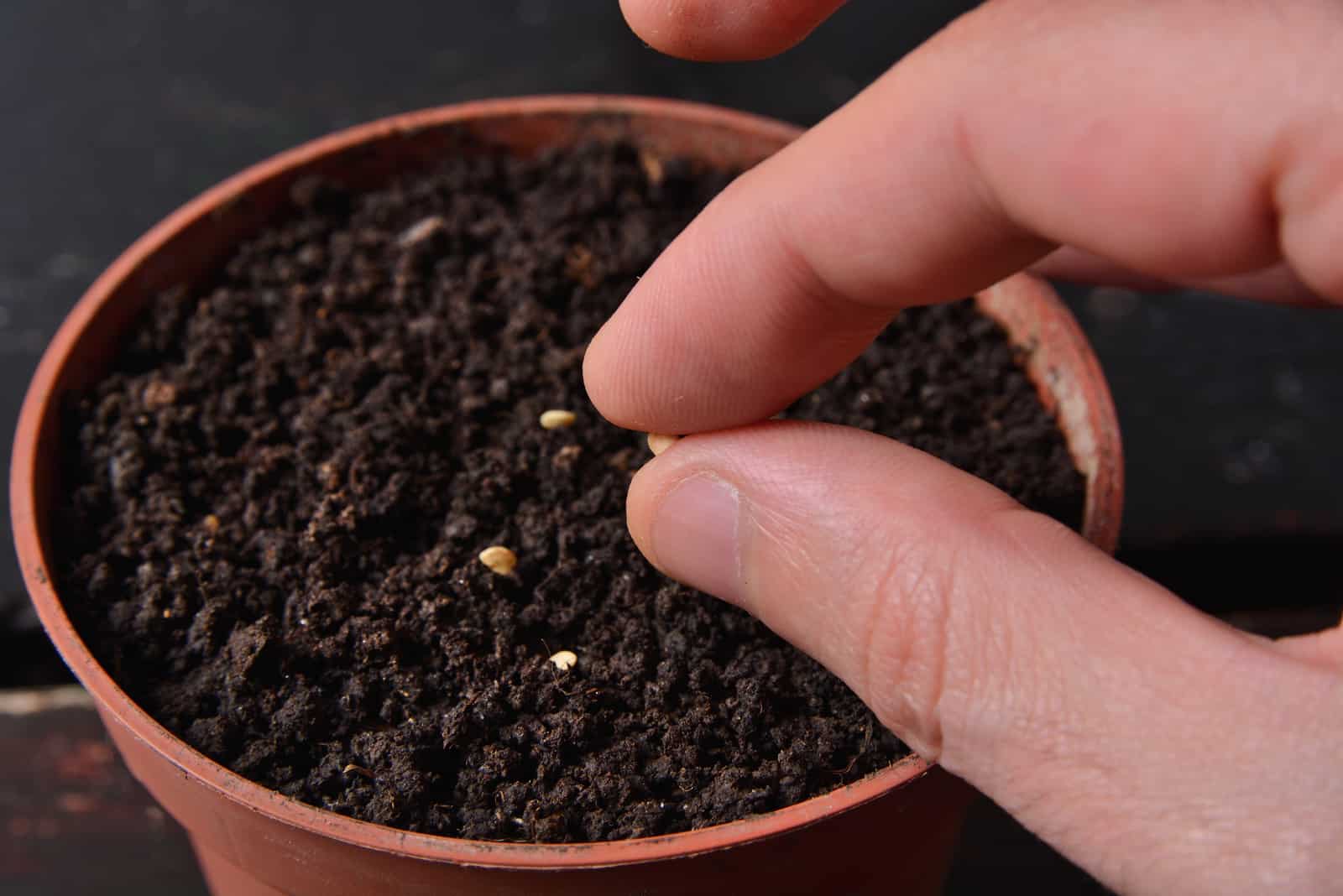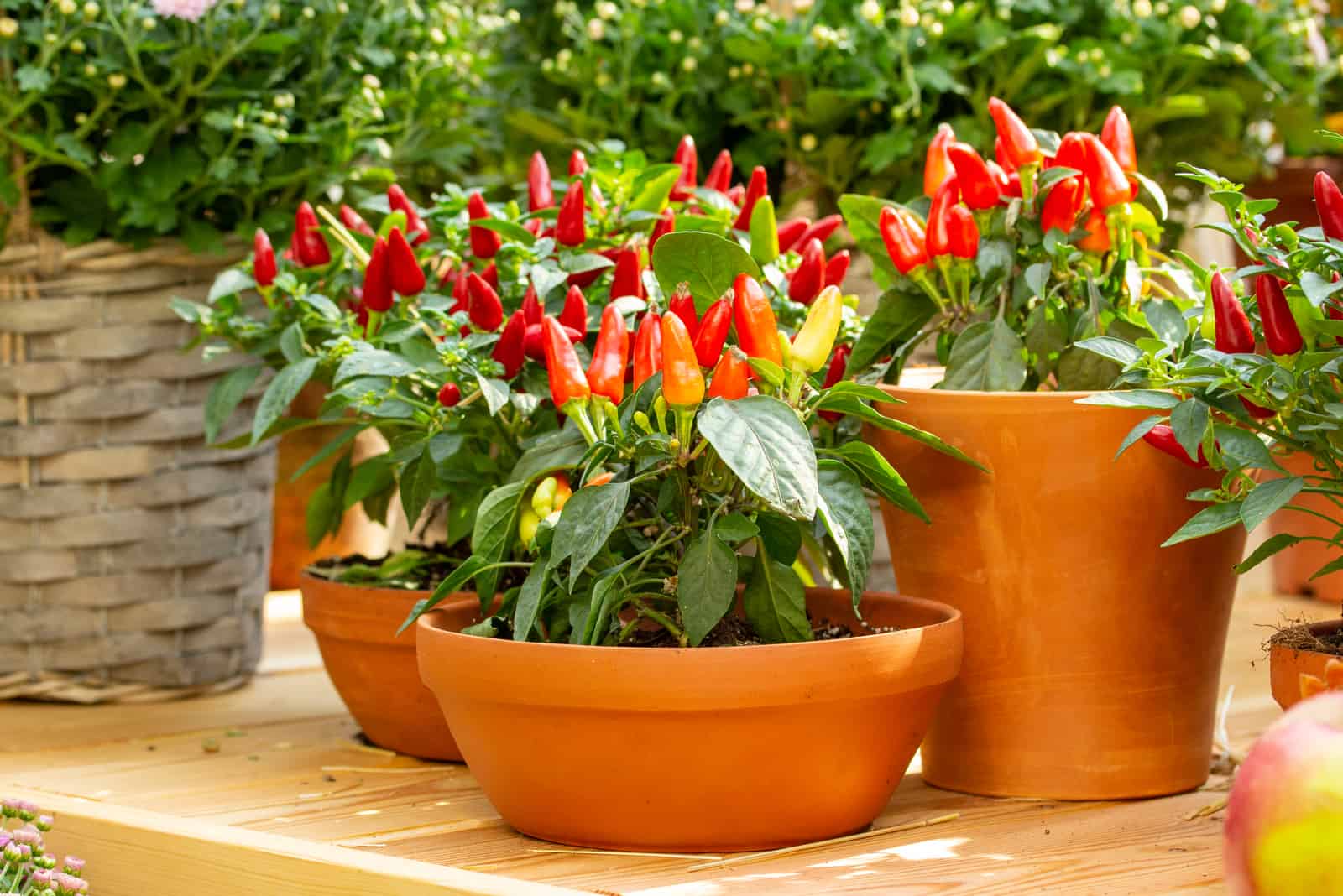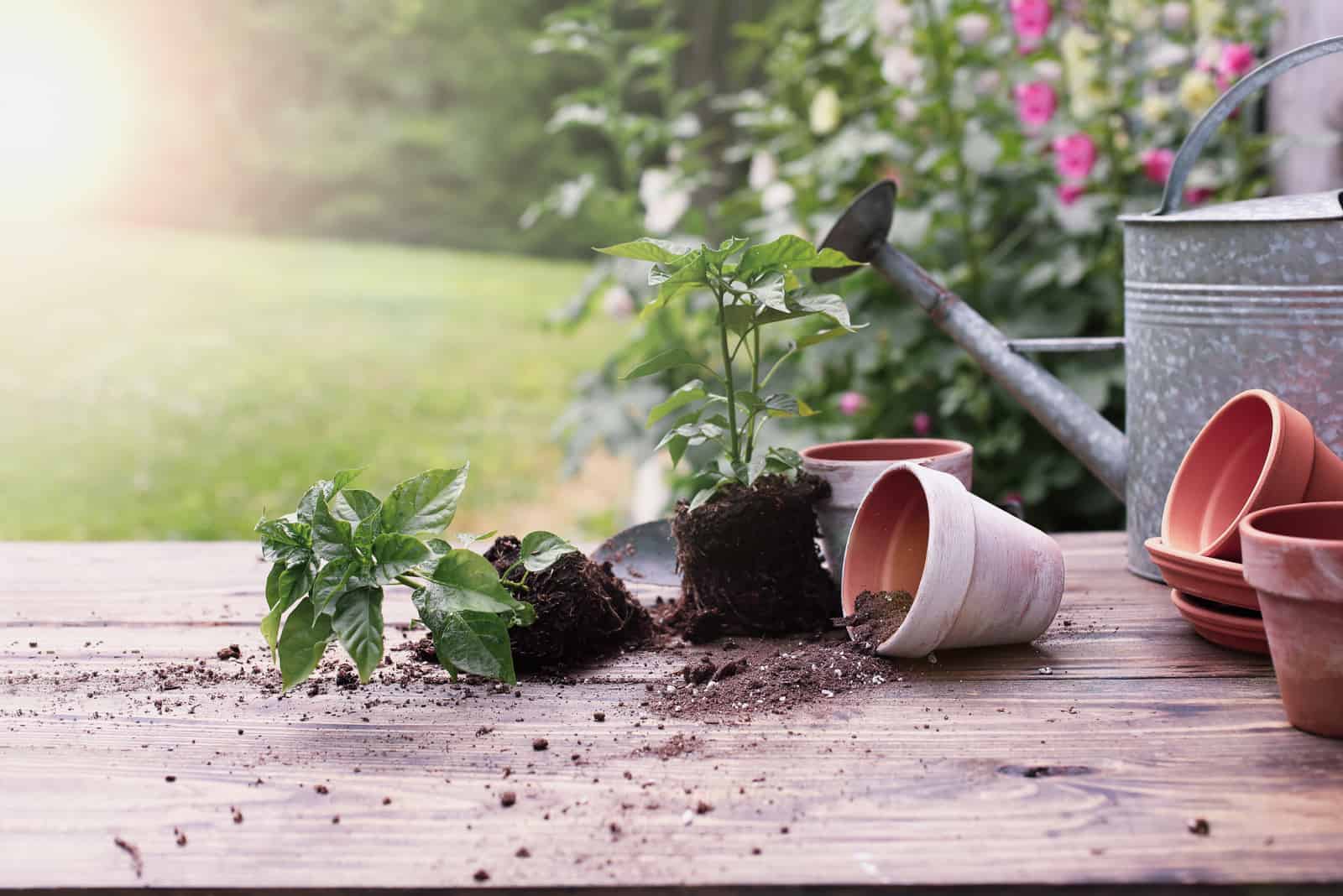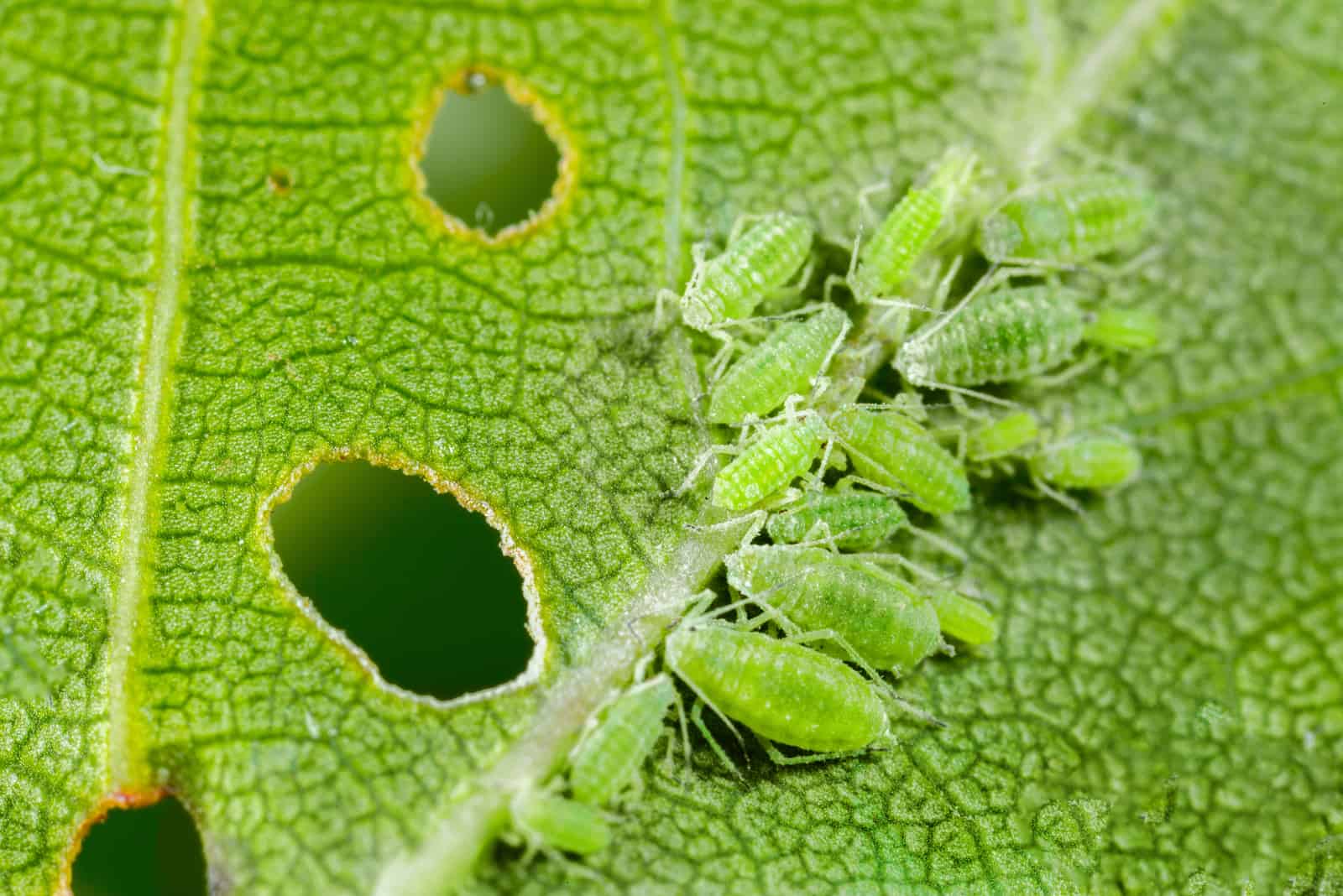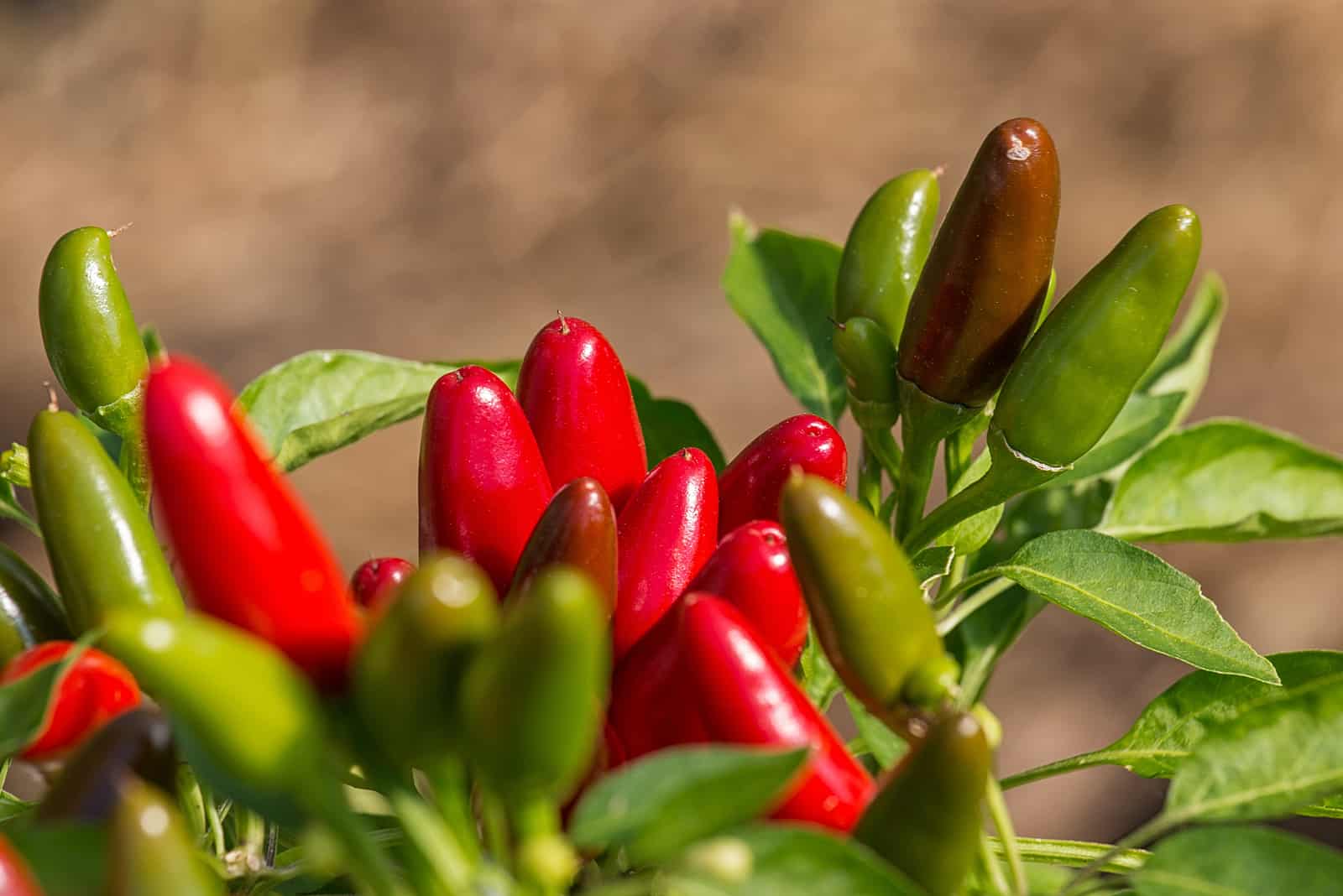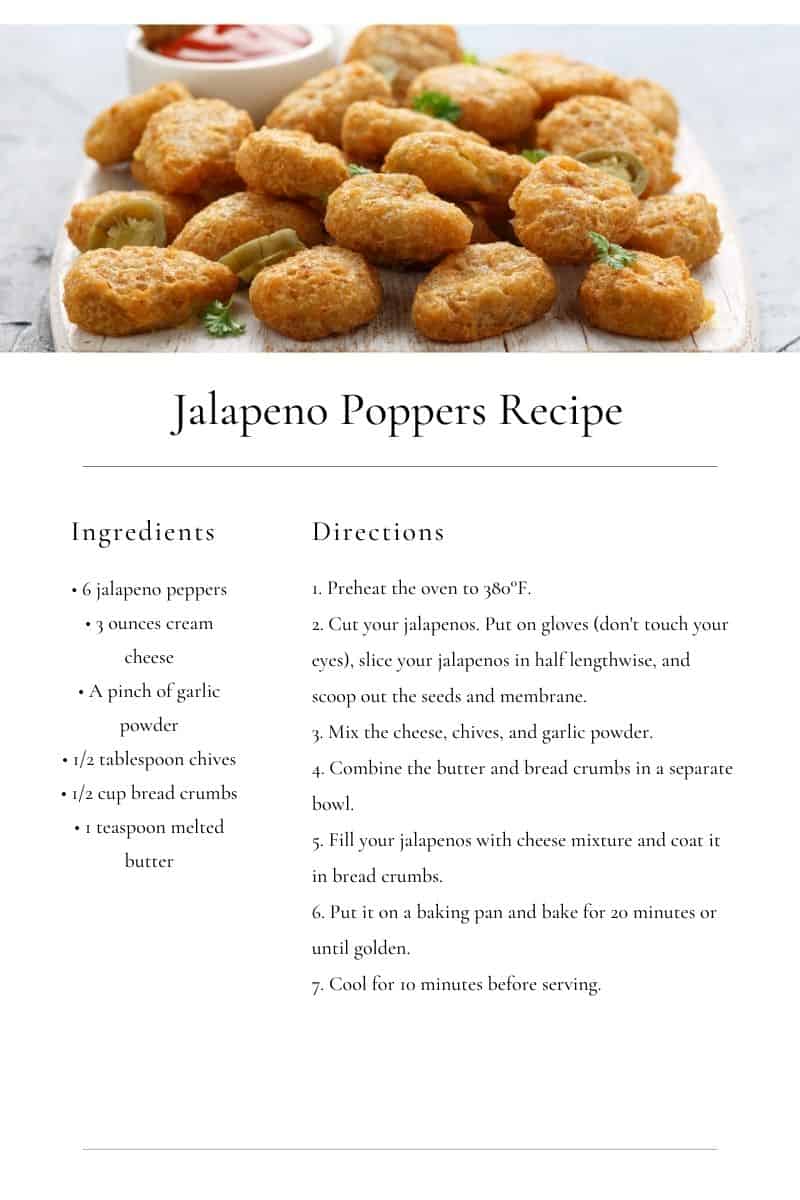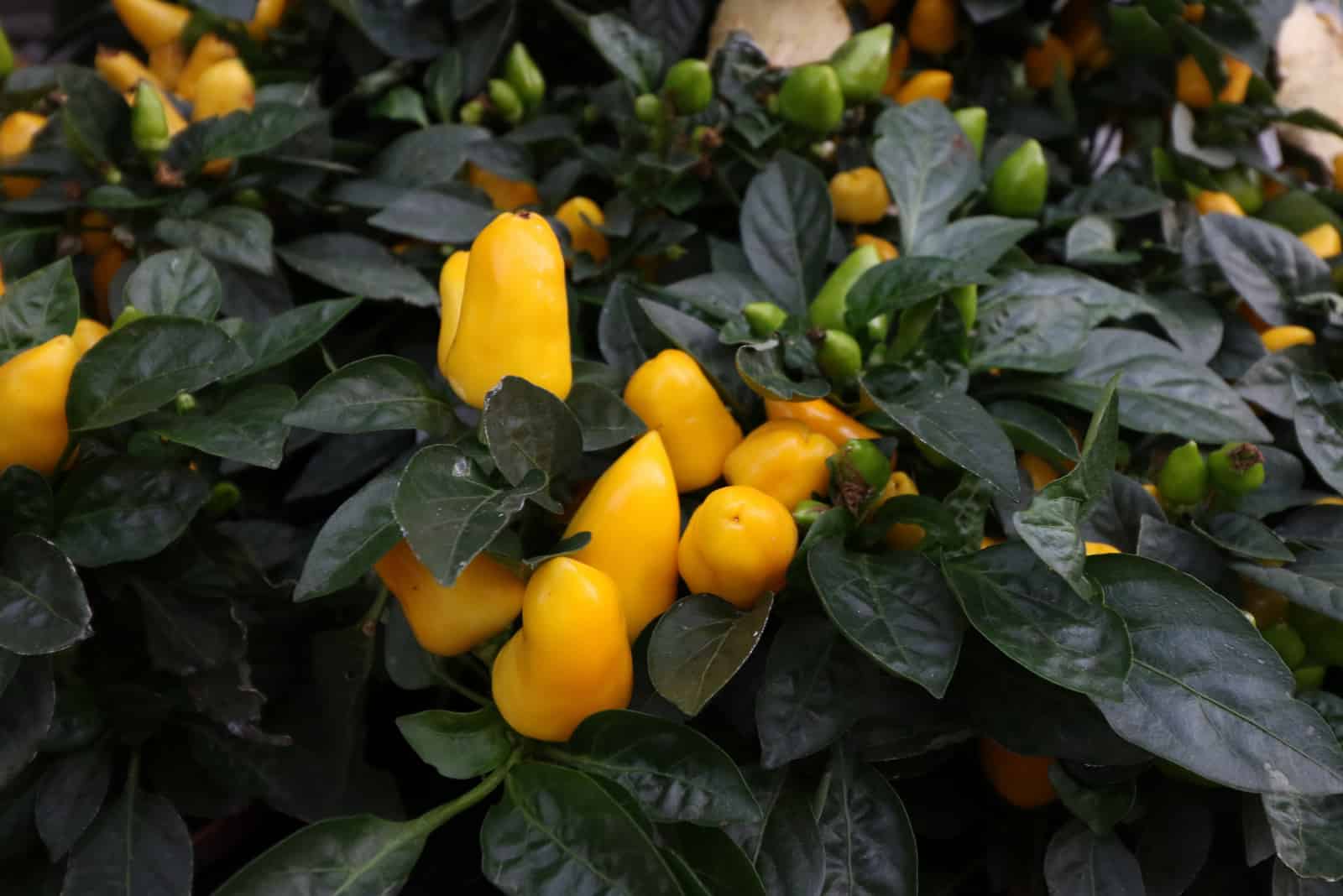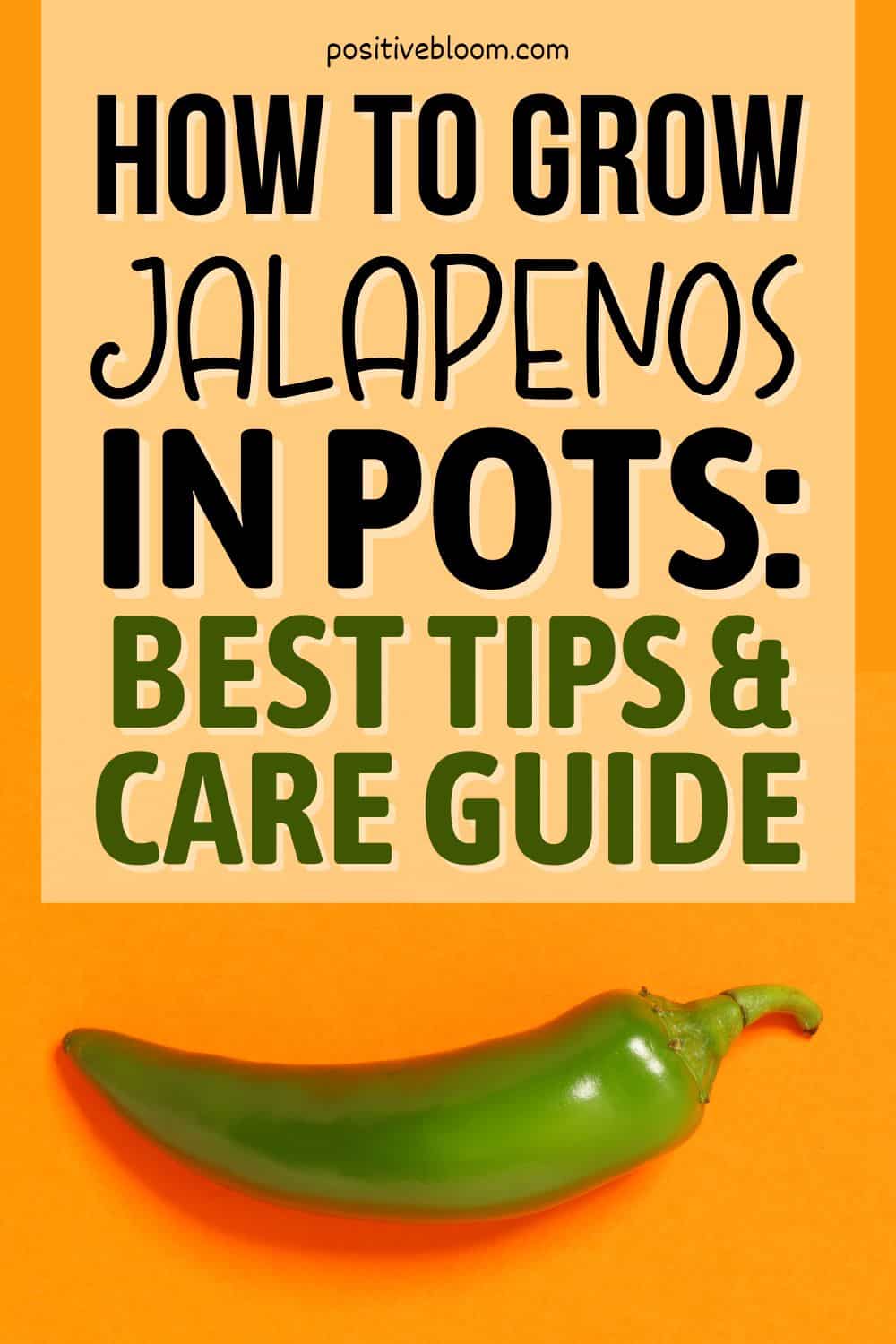Positive Bloom is an Amazon Associate and we earn from qualifying purchases through these links at no extra cost to you.
If you like spicy vegetables, but don’t have much experience growing them, there’s a pepper that’s perfect for you: the jalapeno!
Jalapenos make a great addition to container gardens.
Capsicum annuum, or jalapenos, come from Mexico and are a variety of chili peppers also known as hot peppers. Jalapenos measure from 2,500 to 8,000 units on the Scoville scale, compared to bell peppers that measure 0 units. It seems like jalapenos are pretty spicy!
If you think jalapenos are too spicy, remember that the Carolina Reaper variety measures 2.5 million units on the Scoville scale, yes, really!
All chili peppers belong to the nightshade family, which is the same family as potatoes, eggplants, and tomatoes, believe it or not.
I always grow my jalapenos in pots, and I highly recommend you do the same.
I assure you that growing jalapenos is easy, exciting, and beneficial in several ways.
I have prepared all the information you need so you can grow jalapenos in pots.
Let’s get started!
How To Grow Jalapenos In Pots
As mentioned, growing jalapeno peppers isn’t challenging, especially if you know how to give them the best possible care.
Here’s a table with an overview of conditions that jalapeno peppers need to grow healthy.
[table id=171 /]
Let’s start with jalapeno pepper seeds and look at a step-by-step guide to growing jalapeno peppers in pots!
Planting Jalapeno Seeds
The most important thing about the seeds is when you sow them. Check the forecast to see the date of the last expected frost. You should plant the seeds about 8 to 10 weeks before that date.
Of course, the last frost date depends on the climate zone you live in, so you should be careful with the forecast.
If you’re wondering where to get jalapeno seeds, they’re available in all plant stores as these pepper varieties are commonly grown.
If you decide on a specific jalapeno variety, you can check if they’re available online.
Luckily, you won’t have any issues with germination.
You’ll need a seed tray filled with seed-starting mix soil. Moisturize the soil and plant about 2-3 seeds in each cell.
Water the soil thoroughly.
Pay attention to soil temperature, humidity, and moisture within the tray. The ideal temperature for the seeds to germinate is about 80 degrees Fahrenheit. Don’t worry if your house is a little bit colder, you can purchase a heat mat like this one on Amazon:
[lasso id=”3894″ link_id=”2899″ ref=”amzn-vivosun-durable-waterproof-seedling-heat-mat-warm-hydroponic-heating-pad-10-x-20-75-met-standard”]
Seeds need a lot of light (16 to 18 hours per day) so you can also consider purchasing grow lights. I suggest these:
[lasso id=”2562″ link_id=”2900″ ref=”amzn-amazon-6″]
You can also place the tray on a south-facing windowsill so your jalapenos receive a lot of sun.
The great thing is that you don’t have to wait for too long for the jalapeno seedlings to sprout as it usually takes just a week.
Seeds From Store-bought Jalapeno peppers
Most growers decide to purchase seeds, but I’m sure you’re wondering if you can grow jalapenos from the peppers you buy in stores.
I don’t want to disappoint you, but you shouldn’t rely on this method.
For example, when you purchase green jalapenos, you should bear in mind that they haven’t matured yet, so there’s a possibility that the seeds aren’t viable. However, you can always try!
I either purchase seeds or harvest them from my mature jalapenos. I always let the pods ripen completely until they’re red and remove the seeds.
I have to mention that you should do this carefully and always wear gloves.
Are The Seeds Viable?
Whether you purchase the seeds or harvest them from your own peppers, you must check if they’re viable.
I use a paper towel and a bag (bags for sandwiches do wonders). Wet the paper towel, place it in the bag, and seal it.
Put the bag in a warm place and ensure it gets a lot of light (a sunny window works well). You can also place the bag on a heat pod, but make sure there’s something between the heat pod and the bag. I put it on a kitchen towel.
Here’s a video:
The seeds should sprout in about a week, and then you can place them in the seed tray or potting mix.
If everything goes well, sow your jalapeno seeds before the last frost date then continue with the procedure described above.
I’m sure you’ll have a lot of fun growing jalapenos in your garden, but you can also try growing them in pots. You won’t regret it!
How To Dry The Seeds
If you don’t intend to use the seeds immediately, you need to dry them out entirely before you decide to plant them.
Drying the seeds prevents harmful fungi and bacteria from affecting them.
I use a paper bag for this purpose. I put the seeds in the bag, seal it, and leave it in a dark and dry place for about a month.
When the seeds have dried out entirely, I put them in a jar and seal them with a paper towel over the top.
You can also place them on a paper towel and put them somewhere with good air circulation.
Choose The Right Soil
It’s important to purchase ideal soil for jalapeno peppers. There are numerous potting mixes that all claim to be the best (as with every other product).
A loamy, sandy mixture with plenty of organic materials is perfect for Jalapenos. The most efficient way to get that amount of organic matter is by adding compost to the soil.
When we grow jalapenos in pots, there isn’t much space, so room for a compost bin might be a problem. However, you can easily purchase potting soil rich in nutrients.
Fertilize Your Jalapenos
The seeds sprout quickly, so you have to prepare to fertilize them and water them according to a schedule.
When they’re young, jalapenos aren’t heavy feeders and are susceptible to over-fertilizing.
Fertilization is another advantage of growing jalapenos in pots as they need to be fertilized less than when grown in the ground.
Slow-release fertilizer works well for potting soil and suits any container garden plant. It is ideal for plants that don’t require a lot of extra nutrients.
It will provide all the nutrients your jalapenos need, especially in the first few months.
Dilute an all-purpose fertilizer to half strength and add it to the soil.
Water your Jalapeno Plant
Jalapenos prefer the soil to dry out a little bit before watering as it will keep soil moisture and protect the soil from waterlogging. They are highly susceptible to overwatering, which is the biggest concern and most challenging thing about growing jalapenos.
Let the soil dry about two inches down before watering it again.
I always water my jalapenos in the early morning or evening. You should never water your jalapenos at midday as it can cause leaf burn.
Another essential thing to remember is to water at the base of the plant and be extra careful not to get the leaves wet.
Watering the leaves can make the sun focus on a single point, which may quickly burn them.
It would be great if jalapenos had a fixed watering schedule, but unfortunately that’s not the case.
Hot and sunny weather will increase your jalapenos’ need for watering, and rainy weather will reduce it.
So, the best idea would be to create your own watering schedule taking into consideration other factors like sunlight.
Transplant The Seeds
It’s time to move your seedlings to a larger pot. You should do it after they sprout and grow for about 2-3 weeks. You can transplant the plants directly into the pot, but I suggest increasing the pot size gradually.
Move the seedlings from the seedling trays to larger pots (3-4 inches) with fresh and moist soil. This will be their temporary home for the next few weeks until they are ready for planting in the original container.
Tips On Pruning Jalapeno Plants
Around 6-8 weeks after the transplantation, you should prune your jalapenos. Jalapenos can grow tall, and even though it may not affect the production, it’s better to be safe. You can also promote new growth by pruning.
Before pruning, prepare sharp and sterilized pruners, shears, or scissors. Select a stem and cut it below the node. Sharp cutting tools will help you make a clean-cut, and they’ll also help you avoid damage.
Remove some leaves below the cut to help the light to reach your other plant parts.
Choose The Right Container For Your Jalapeno Pepper Plants
The great thing is that you can grow jalapenos in various pots. When I say various, I mean design, so there are a couple of things to consider.
The first is the size of the pot. Of course, the size depends on the variety, as some jalapeno varieties may grow taller and bushier.
Compared to other peppers, jalapenos are medium-sized. This means a 5-gallon pot is ideal for your jalapeno plant.
Smaller pots may affect production.
You’ll need a 10-gallon pot for your jalapenos to overwinter.
On the other hand, if you plan to discard your jalapenos at the end of the season, a 5-gallon pot would be best.
Another thing to consider is the pot’s drainage, as overwatering can cause root rot. These plants prefer the soil to dry out a little bit between waterings, so choose a pot that has drainage holes.
Consider purchasing fabric grow bags like these from Amazon:
[lasso id=”3896″ link_id=”2901″ ref=”amzn-jeria-12-pack-5-gallon-vegetable-flower-plant-grow-bags-aeration-fabric-pots-with-handles-black-come-with-12-pcs-plant-labels”]
Best Jalapeno Cultivars To Grow In Pots
If you decide to grow jalapenos in pots, but don’t have a lot of space and are looking for smaller varieties, I suggest Jalafuego and Early jalapeno.
Jalafuego (Capsicum annuum (hybrid)) needs more heat than other jalapenos, takes about 70 days to mature, and produces 4 inches pods.
Early jalapeno (Capsicum annuum) takes about 60 days to mature and produces 3 inch peppers.
Common Issues
Although Jalapenos plant care isn’t challenging, some problems can occur.
Remember that prevention is the best cure.
Let’s see what might go wrong!
Jalapeno Leaves Curling
The first thing that can cause the leaves to curl is overwatering.
How come? The roots suffocate due to excess water and are prevented from sending nutrients to the leaves.
Jalapeno leaves respond by curling. If overwatering is causing curling leaves, the leaves will likely turn yellow soon.
If you have an overwatered jalapeno plant, you should leave it to dry and create a watering schedule according to its needs.
The second reason may be underwatering. When a jalapeno plant lacks water, the leaves will curl to store as much water as possible. If the leaves start wilting, you should check the water supply.
Water your jalapeno thoroughly and continue watering more often until you see signs of improvement. Then, water your jalapeno according to your own schedule.
Edema can also be the reason for leaf curl, but rarely. Your plant may show leaf curl, but also some white crystals on the undersides of the leaves.
I suggest adjusting the light, improving the airflow, and increasing humidity in this case.
Your jalapeno may also suffer from nutrient deficiency, and show leaf curl as a sign.
Calcium deficiency is most likely the cause, so test the soil and add calcium. You can find it in stores.
Direct sunlight may also cause leaf curl, especially in combination with underwatering. So water your jalapeno more and ensure it has an adequate amount of light.
Leaves Turning Yellow
Jalapeno leaves may turn yellow if the plant lacks nitrogen. The leaves can fall off in severe cases. The plant may also grow slowly and the flowers may fall off. If you want to promote pepper flowering, pay close attention to nutrients.
Test the soil and add nitrogen if necessary.
Always keep jalapeno soil moist but never waterlogged as it can lead to the leaves turning yellow. If the soil is soggy, you should check the roots, and if they are black or brown and mushy you may need to repot the plant (after you remove the affected roots).
Never let the nighttime temperatures drop below 50 degrees Fahrenheit as it may cause the leaves to turn yellow and fall off.
Adjust the nighttime temperature and you’ll see signs of improvement soon.
Pests
Yes, pests again! If you grow any other plant, you know how often these tiny creatures can infest the plant and cause damage.
Aphids are the most common pests that affect jalapeno plants. Aphids don’t like eating the jalapeno peppers, but rather suck the sap from the leaves.
Monitor the leaves constantly. Luckily, aphids are easy to get rid of when spotted in time. However, they spread very fast, which is why you should keep an eye on them.
Use water, neem oil, and Castille soap as part of your general care for your jalapenos.
You can introduce ladybugs to solve this problem! They are beneficial insects that feed on aphids (thank you, ladybugs).
Watch out for cucumber beetles, too! They can damage the roots and breed rapidly, so make sure to remove all the weeds around your plants.
Diseases
Bacterial infections can be fatal for your jalapeno peppers, so as soon as you spot any leaves starting to turn brown, check if the bottom leaves are in contact with the soil.
Waterlogged soil will most likely attract harmful bacteria, so pay attention to watering.
The best prevention is placing mulch below the plants. If there are any low-hanging leaves, I suggest you remove them.
How And When To Harvest Jalapenos
Now you’ve planted the seeds, taken great care of them, transplanted them, ensured all the right conditions, and reached the end of the growing season, so it’s finally time to harvest your jalapenos!
Luckily, harvesting is an easy task! Just pull the jalapeno pepper and it should snap off quickly if it’s ripe.
Now you have to decide how spicy you want your jalapenos to be!
For example, green jalapenos aren’t as spicy as red ones. Leave them to turn to dark green, then black, and eventually to deep red. There you go; red and spicy!
Why is that so? The longer you leave your peppers ripe, the more capsaicin will develop. If you want to harvest extra spicy jalapenos, you can let the soil dry out completely between waterings when the jalapeno peppers are ripening; the pods produce more capsaicin in this case.
How To Store Jalapenos
You can do so many things with fresh jalapenos, but if you want to save some for later there are a few nice methods you can use.
Before moving on, I’d like to warn you how spicy jalapenos are. However, species like serrano measure 10,000-23,000 units, cayenne peppers 30,000-50,000 units, habanero peppers 100,000-350,000 units, and ghost peppers 855,000-1,041,427 units.
Now, it’s time to learn how to store your jalapenos!
Freezing
The first is to freeze your jalapenos (yes, you can do that). I suggest you purchase freeze bags for this.
I don’t chop my jalapenos before freezing as they are small enough to fit in the freeze bag. Honestly, I really don’t want any hot pepper juice on my hands!
Wash and dry your jalapenos, remove the stems, place them in a freeze bag, remove any air, and seal it.
If you don’t want to slice the jalapenos after defrosting them, feel free to cut them before freezing, but please wear gloves.
Dehydrating
The second method is to dehydrate your jalapenos. You can use a dehydrator, an oven, or dry them in the air (this will work best if you live in an arid climate). Wash the jalapenos, dry them, slice them, and dehydrate them using one of the methods above. Always store dry jalapenos in a sealed container.
Roasting
The third, and my favorite, method is to roast the jalapenos. You can do this by using an oven, and I suggest roasting the jalapenos whole as they’ll retain more juice and be easier to peel.
You can also roast your jalapenos on the grill, which is an easy method that provides fascinating results.
You can roast your jalapenos over an open flame if you have a gas stove. Please don’t do this if you are not 100% sure that you can control the flame.
Always steam your jalapenos after roasting to avoid burning. Additionally, it’s almost impossible to peel off the skin immediately after roasting jalapenos.
One more popular method of storing jalapenos is pickling them.
Hot sauce, anyone? Just me then.
Jalapeno Poppers Recipe
I would like to share my favorite recipe for one of the best snacks ever: jalapeno poppers!
Ingredients:
• 6 jalapeno peppers
• 3 ounces cream cheese
• A pinch of garlic powder
• 1/2 tablespoon chives
• 1/2 cup bread crumbs
• 1 teaspoon melted butter
Instructions:
1. Preheat the oven to 380°F.
2. Cut your jalapenos. Put on gloves (don’t touch your eyes), slice your jalapenos in half lengthwise, and scoop out the seeds and membrane.
3. Mix the cheese, chives, and garlic powder.
4. Combine the butter and bread crumbs in a separate bowl.
5. Fill your jalapenos with cheese mixture and coat it in bread crumbs.
6. Put it on a baking pan and bake for 20 minutes or until golden.
7. Cool for 10 minutes before serving.
FAQs
How long does it take for jalapeno plants to grow?
It takes about 60-80 days for jalapenos to reach maturity. This depends on the variety and the conditions you provide it with, of course.
The key to growing healthy and tasty jalapenos is ensuring they get a lot of sun and water (but not too much).
How big do jalapeno plants get in pots?
Jalapenos can reach 24 to 36 inches in height and 12 to 24 inches in width. You can control the size by pruning regularly.
How many jalapeno plants can fit in a pot?
The best idea would be to plant one jalapeno in a 5-gallon pot (12-14 inches in diameter). Of course, if you have a bigger pot you can plant more jalapenos. Ensure the pot is deep (at least 14 inches) and has drainage holes.
Wrapping Up
I’m sure you’ve heard a lot about jalapenos being spicy and delicious, and now you know they’re also easy to grow.
If you decide to grow jalapenos in pots, you’ll get the crops to harvest in no time by following our advice.
If any problems with your jalapenos occur, now you know to deal with them. Enjoy growing, harvesting, and, of course, eating your very own jalapenos!
Until next time!
Like this post? Share or pin it for later!

